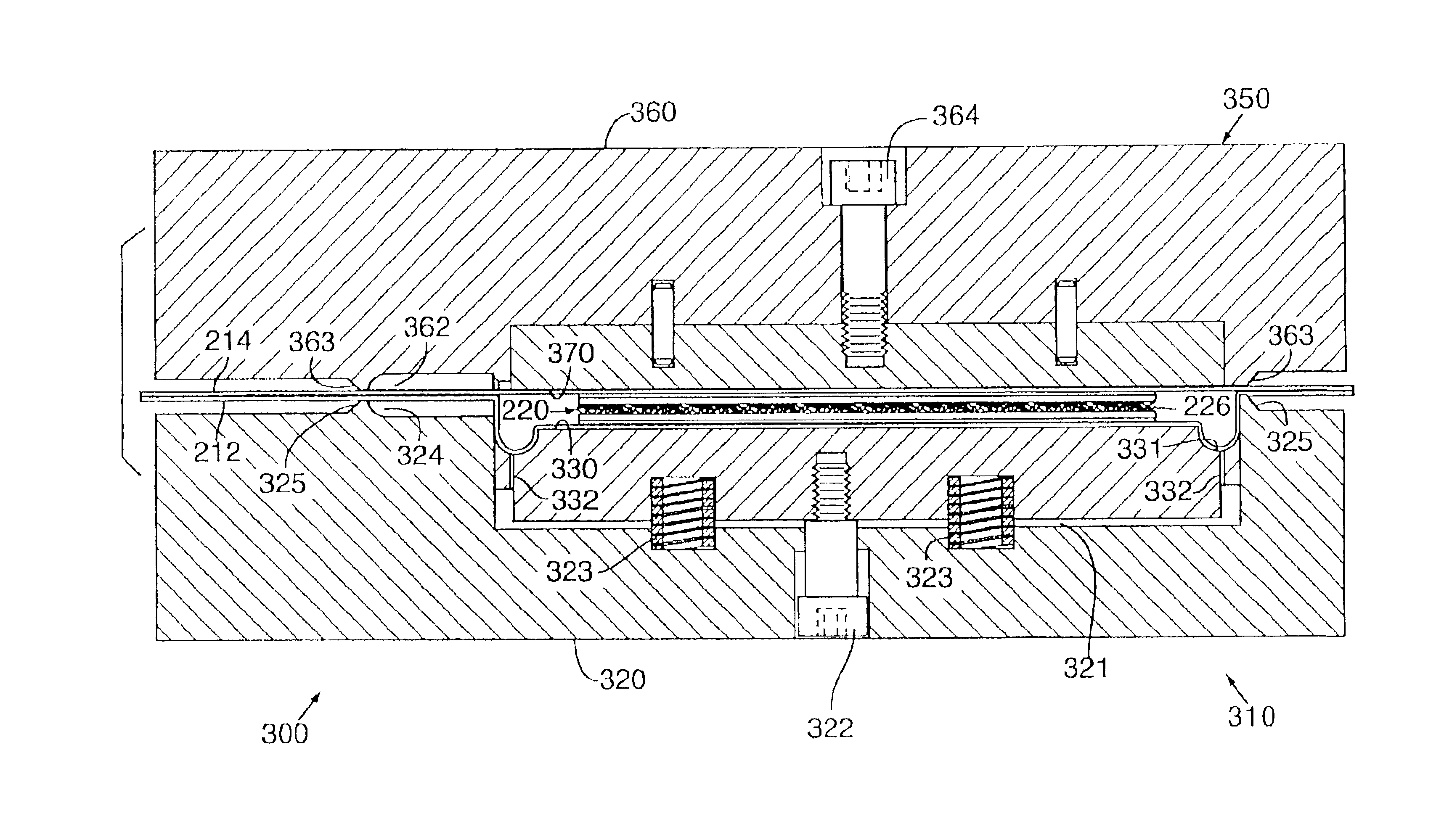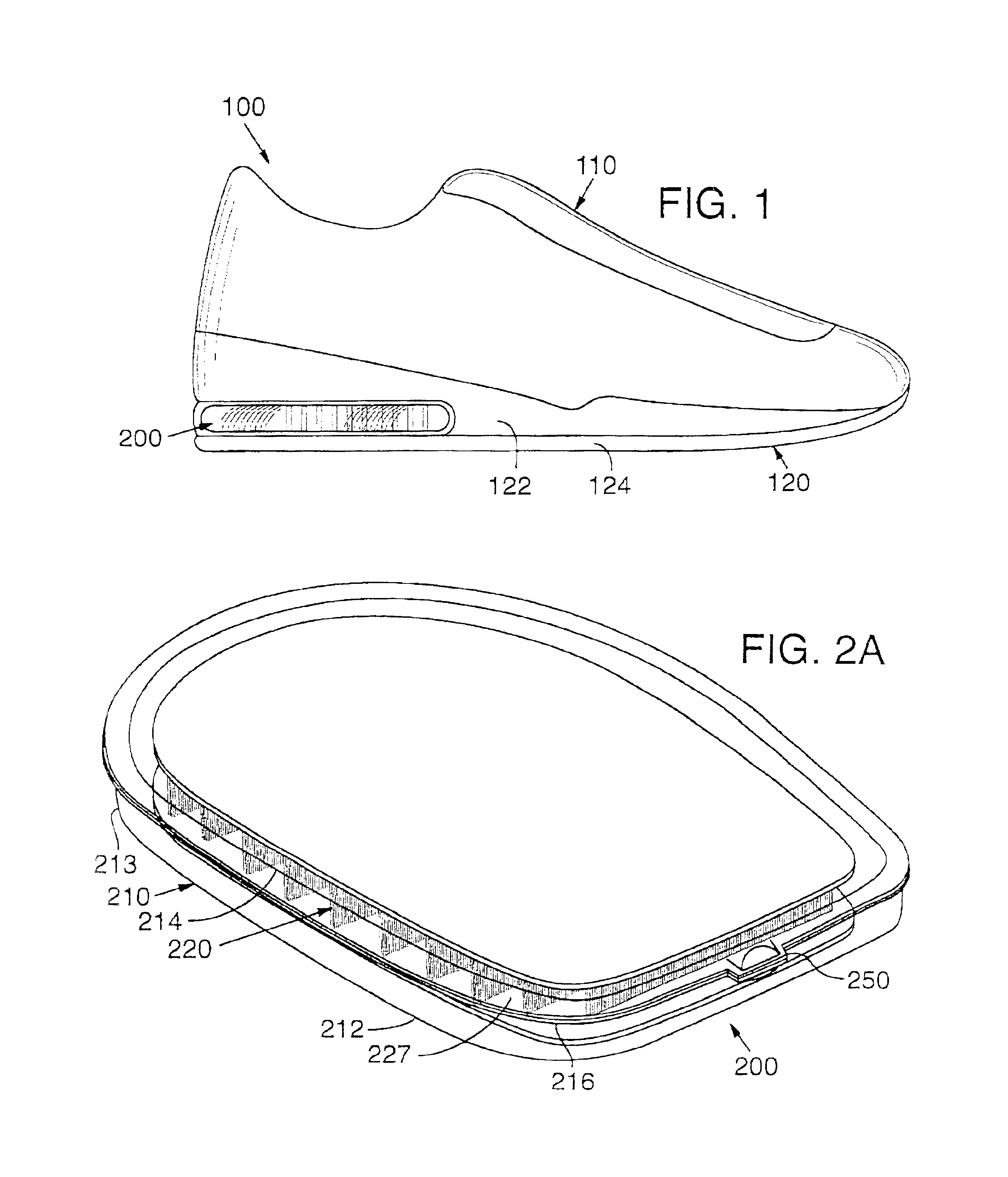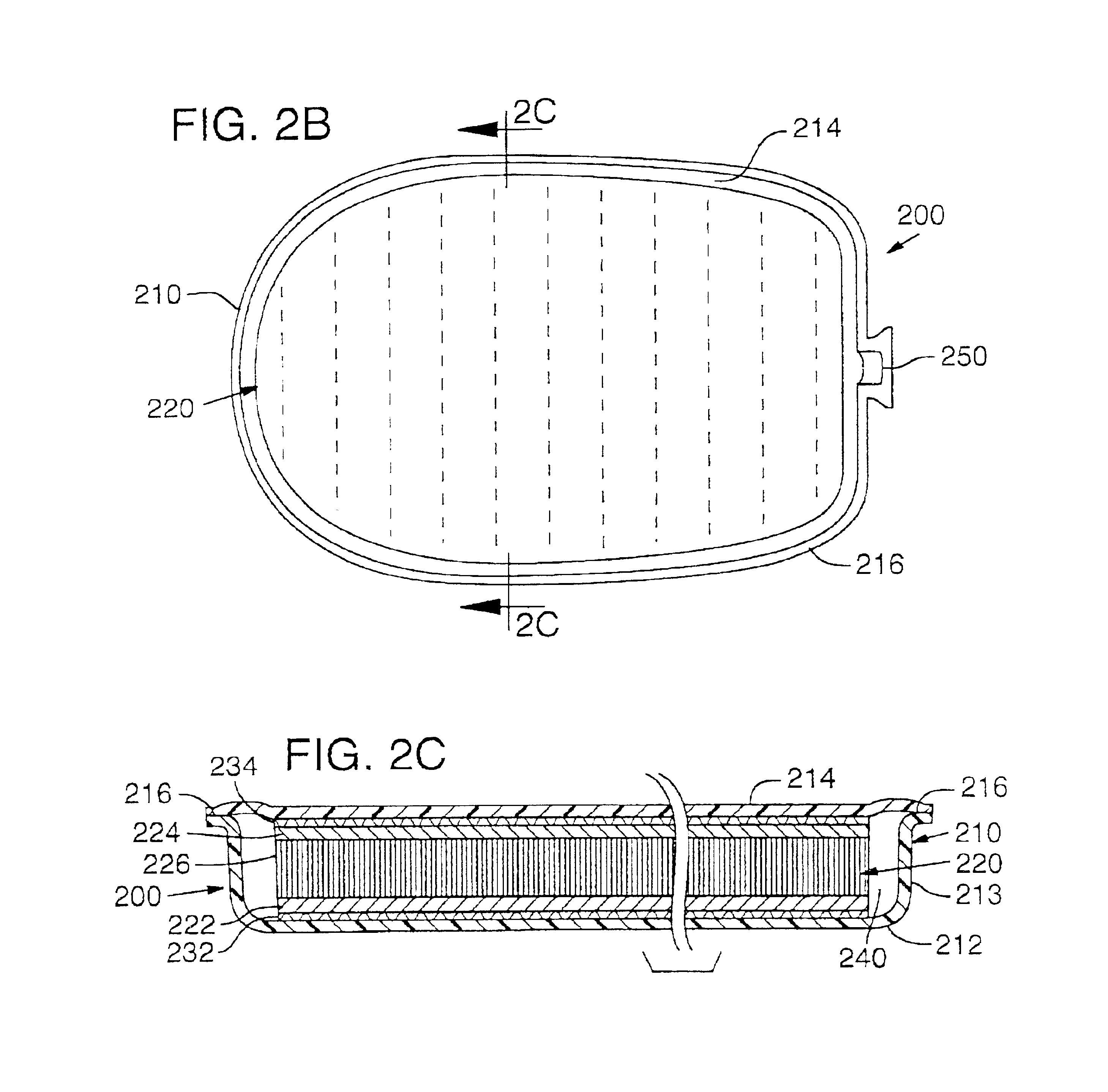Method of thermoforming a bladder structure
a bladder and fluid filling technology, applied in the field of thermoforming a bladder structure, can solve the problems of deteriorating overall cushioning of the midsole, reducing the compressibility of the foam, etc., and achieves the effects of improving efficiency, increasing the visibility of the bladder's interior, and reducing labor and cycle times
- Summary
- Abstract
- Description
- Claims
- Application Information
AI Technical Summary
Benefits of technology
Problems solved by technology
Method used
Image
Examples
Embodiment Construction
Article of footwear 100, depicted in FIG. 1, includes an upper 110 and a sole structure 120. Upper 110 is configured to receive a foot of a wearer. Sole structure 120, which provides a durable, shock-absorbing medium located between the foot and the ground, is primarily formed of a midsole 122 and an outsole 124. A bladder 200, formed in accordance with the method disclosed below, is secured in the heel area of midsole 122 and above outsole 124. As depicted in FIG. 1, article of footwear 100 is an athletic shoe. Bladder 200 may, however, be utilized in other types of footwear, including dress shoes, sandals, in-line skates, and boots.
Bladder 200, depicted in FIG. 2, includes an outer enclosing member 210, an inner core 220, a pair of coupling layers 232 and 234, a fluid 240, and an inlet 250. Outer enclosing member 210 is formed of a first sheet 212 and a second sheet 214 that are joined to form a peripheral bond 216. The material forming sheets 212 and 214 may be, for example, five...
PUM
| Property | Measurement | Unit |
|---|---|---|
| thickness | aaaaa | aaaaa |
| thickness | aaaaa | aaaaa |
| thickness | aaaaa | aaaaa |
Abstract
Description
Claims
Application Information
 Login to View More
Login to View More - R&D
- Intellectual Property
- Life Sciences
- Materials
- Tech Scout
- Unparalleled Data Quality
- Higher Quality Content
- 60% Fewer Hallucinations
Browse by: Latest US Patents, China's latest patents, Technical Efficacy Thesaurus, Application Domain, Technology Topic, Popular Technical Reports.
© 2025 PatSnap. All rights reserved.Legal|Privacy policy|Modern Slavery Act Transparency Statement|Sitemap|About US| Contact US: help@patsnap.com



